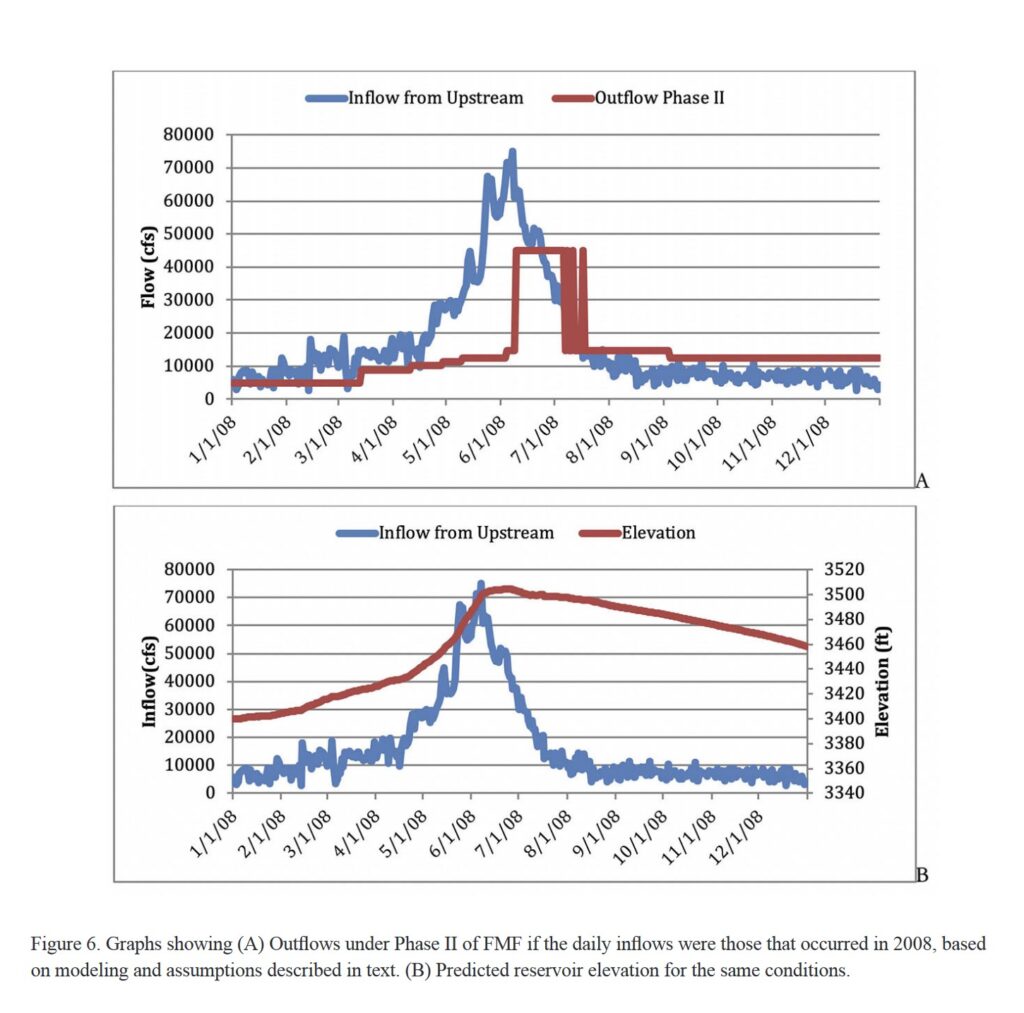An exchange on Twitter about the definition of “dead pool” sent me back to Jack Schmidt et al’s extremely useful (and now extremely relevant) 2016 analysis of what would be required to empty Lake Powell and move all the water down to Lake Mead.
It’s the thing that disabused me of my simplistic notion that you could operate an empty Glen Canyon Dam as if there wasn’t any dam there at all, just passing the “natural” hydrograph on downstream.
Here’s Schmidt et al:
The relatively small capacity of the river outlets would make it impossible for the flow regime of the Colorado River in the Grand Canyon ecosystem to resemble the pre-dam, natural regime. Instead, stream flow in the Grand Canyon ecosystem would be 15,000 ft3/s or less and would be steady throughout the day. During the spring snowmelt season, however, inflows would greatly exceed the capacity to release water downstream, and the elevation of Lake Powell would increase greatly.
Eventually, the reservoir would get high enough that you could use the old power plant outlets, meaning you could suddenly release a lot more water! Flows at that point jump dramatically. Here’s their graph, with flows on the top in brownish red, and reservoir elevation on the bottom:

Schmidt et al 2016 – operations of Glen Canyon Dam at low reservoir elevations.
The whole paper is worth reading for many reasons, not the least of which is the group’s analysis of evaporation savings of sending all the Powell water down to Mead for storage. (Spoiler alert: Evaporation goes down in one place and up in the other. No free lunch.)

I wonder if a siphon could be constructed to lift water out of the deadpool to a pass through point? Steel?
Hi John, what am I missing here….. If the bypass tubes can release up to 15,000 cfs, so can the turbines. It seems BOR has realized instead of passing water through at Dead Pool, there is a Pass-Through-Pool (PTP). In the PTP, a small amount of water in the 3 to 10K range can go through the turbines to still make some electrons and hold the reservoir level above the cut off for the turbines. Is that where the BOR is headed? I may not be explaining this clearly and apologize if I have not clearly asking this question. Thanks for what you do, cordially yours, Tom
To convince me John you need to show for both graphs that the areas below the inflow and outflow graphs plus of minus the change in reservoir storage minus the evaporation loss are equal. Also add precipitation to inflow.Remember Baldy’s Law. We did this in calibrating our Rio Grande – Elephant Butte computer program in 1979 and we ran simulations over a period of many years.